Welcome to The Four Corners of the Southwest. My love for travel and the outdoors has inspired me to learn, research, and share interesting information about the American Southwest.
In my last post, we looked at Natural Bridges National Monument in Utah and learned that a natural bridge is formed by moving water cutting through rock creating an opening. Natural bridges are different than arches which are formed by other erosive forces such as wind and the freezing and thawing of water in cracks that break away rock creating an arch.
Arches National Park in east central Utah has over 2,000 natural stone arches and was declared a national park in 1971. Since then, at least 43 arches have collapsed. In nature, geologic forces are constantly at work. Sometimes the effects of these forces can’t be seen as it can take millions of years for something to happen. In Arches National Park, however, thing happen faster. All arches are temporary and will eventually succumb to gravity and erosion. New arches are forming at a similar pace which will continue the story of Arches National Park.
The Opening of Skyline Arch Increased After a Rock Fall in 1940
The first time I visited Arches National Park I was a teenager and remember vividly an interpretive sign at a parking area near Devil’s Garden in Arches. It had a before picture of the arch that I was looking at. In 1940, the huge rock that appeared to be in the opening of Skyline Arch fell, essentially doubling the size of the opening.
You don’t have to walk far from the parking lot to see it but there is a short trail to get closer and see the boulders at the bottom of the arch.
I was so impressed with the fact that humans could see geological changes happen. I didn’t know, however, that I would be able to see changes in arches in my lifetime.
The 2008 Collapse of Wall Arch
Wall Arch was located along the popular Devils Garden Trail at the end of the park road. Because of its size (it was ranked 12th) and accessibility, it was one of the most photographed arches in the park.
The picture above was one I took of Wall Arch in 1991. The arch collapsed sometime during the night of August 4, 2008. No one reported seeing the arch collapse and fortunately there were no visitor injuries. Campers in the nearby Devils Garden Campground reported hearing a loud rumbling noise.
The Chief Ranger at the time, Denny Ziemann said "Not being a geologist, I can't get very technical, but it just went kaboom. The middle of the arch just collapsed under its own weight. It just happens."
You can read more about the collapse of Wall Arch here.
The 1991 Landscape Arch Rock Fall
Landscape Arch is pictured at the beginning of my post. It looks so skinny and delicate and has a large span. At 290.1 feet, it is among the longest natural rock arches in the world.
In 1991, visitors were at Landscape Arch to observe a major rock fall from the arch itself. Around 2:45 pm, on September 1, 1991, people heard cracking and popping sounds coming from the arch, and two of them provided photos and video to park rangers.
Video of the 1991 Landscape Arch rock fall It’s about three quarters of the way through the video.
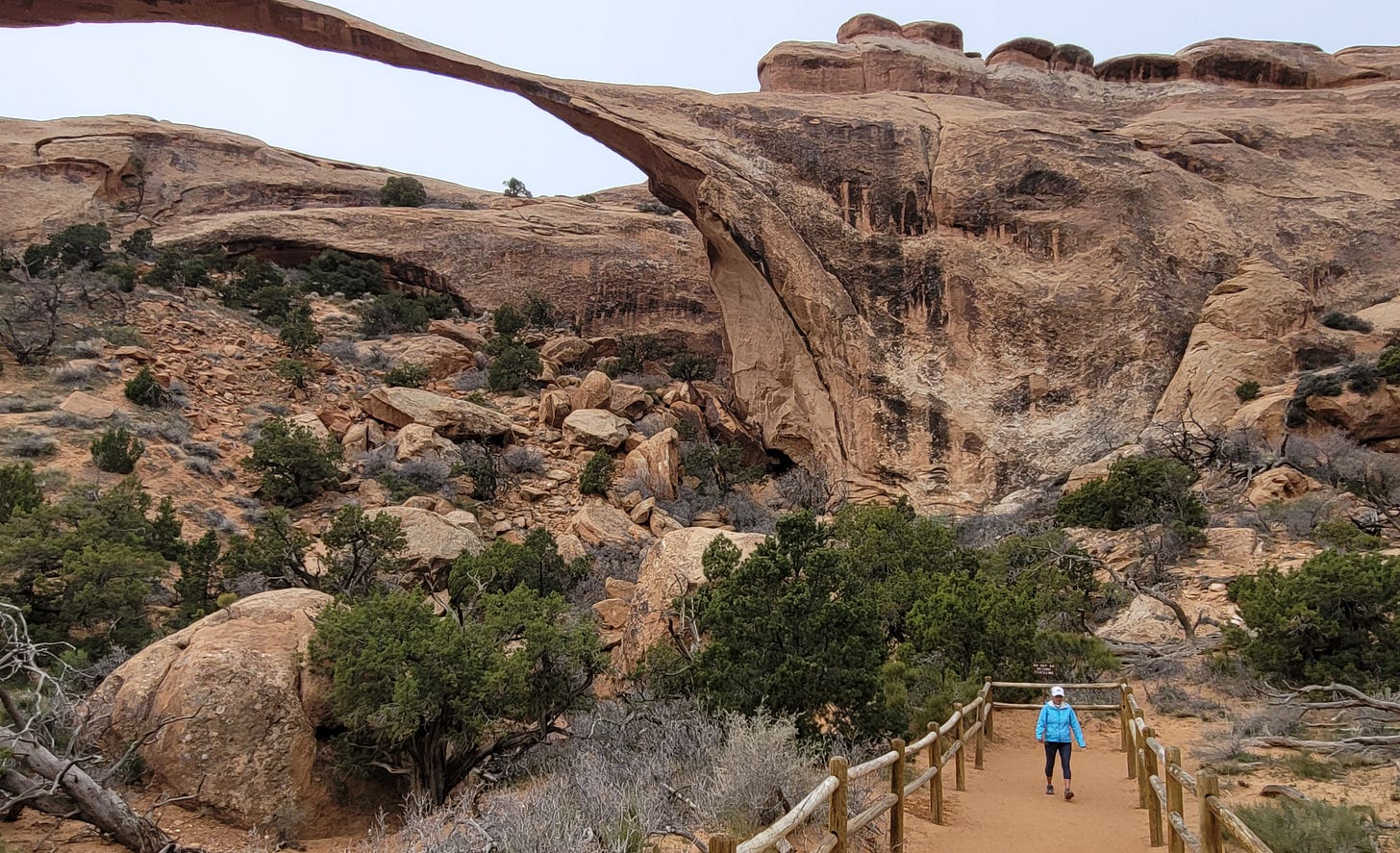
Here's the link to the NPS site about the rock fall.
A “Chip off the Old Block” Chipped Off
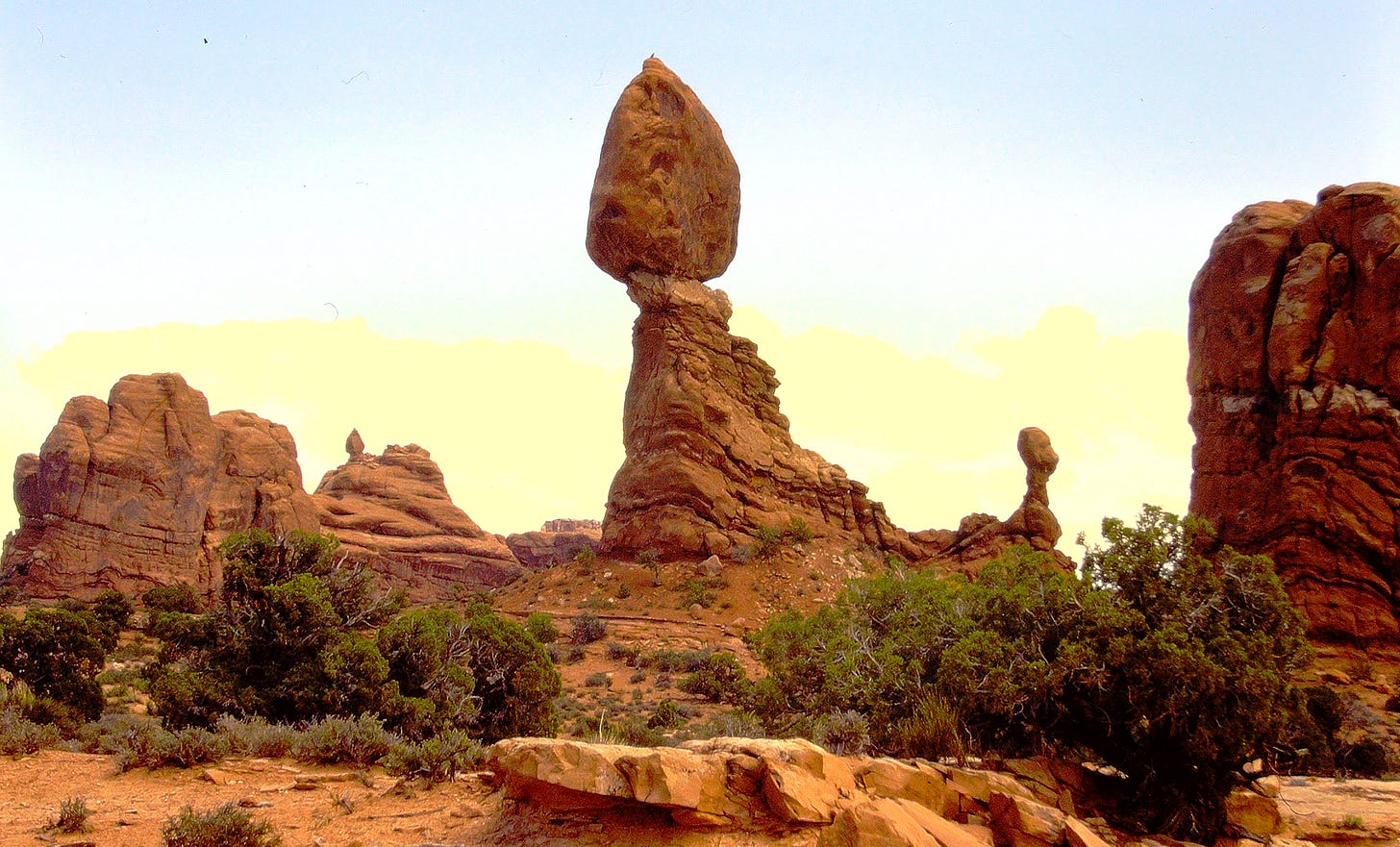
Formations in the park are constantly changing. Note the small pillar to the right of Balanced Rock in the vintage photo. That formation, dubbed "Chip Off the Old Block," fell in the winter of 1975-76. After I read about it, I went back deep into my family’s slides and found a picture that we took (in 1974) before that happened. And, of course, I have to compare it to a picture I took on my most recent trip.
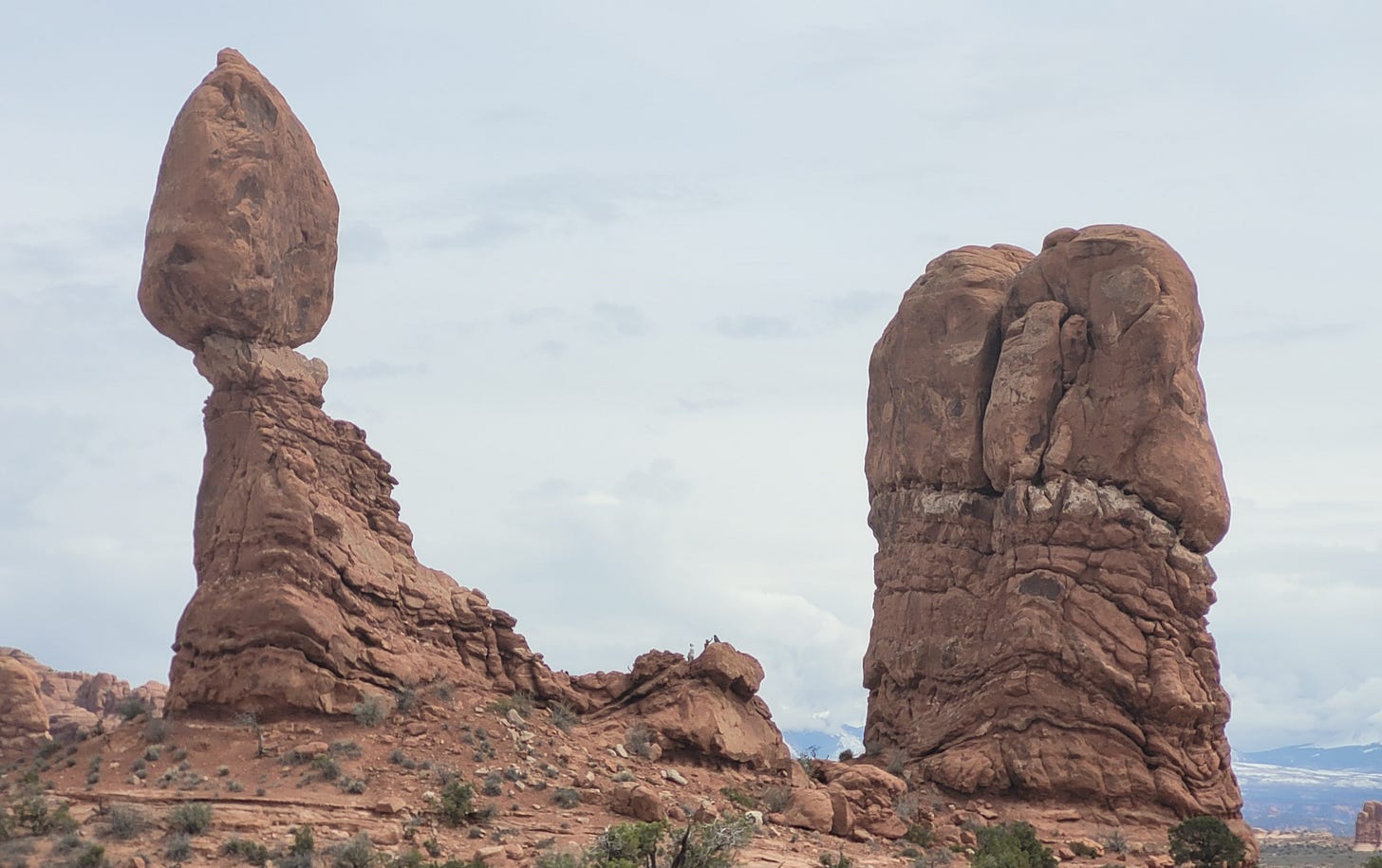
Monitoring Arches for Cracks
A team of researchers at the university of Utah began monitoring arches in the national park in 2013. They are currently studying seven sites. They were monitoring Rainbow Arch until it collapsed in early 2015. The teams also monitor three sites in Canyonlands National Park and Owachomo Bridge in Natural Bridges National Monument. Their research uses resonance readings to record vibrations in the rock and learn how certain frequencies can reveal weakness in an arch’s structure.
In addition to the research data for learning about arches, the arches are also monitored to assess the safety for visitors. One of their concerns is a crack in North Window. The arch is made from two separate “fins” or slabs of rock creating a crack along the length of the arch under where thousands of visitors stand daily. Data from a “crackmeter” installed on top of the arch in November 2015 shows that the crack expands and contracts over 2 centimeters annually. The crackmeter records data every 30 minutes and any indication of abnormal expansion would cause park officials to close the Windows area of the park. Scientists expect that one day, the crack will expand beyond its normal range and bring North Window crashing down. Until then, scientists will continue to monitor and document the crack to learn more.
Next Time
Arches National Park and other places in that part of the country have soil that’s “alive”. Biological soil crusts are communities of living organisms on the soil surface. With them, you do not want to “leave only footprints”. It will be interesting to learn about this!
I had my Achilles tendon surgery last week and it was a success. I’m recuperating well and have been watching college football (Go UCLA Bruins!), writing my Substack and playing with my birds. Thank you for all of your well wishes!!





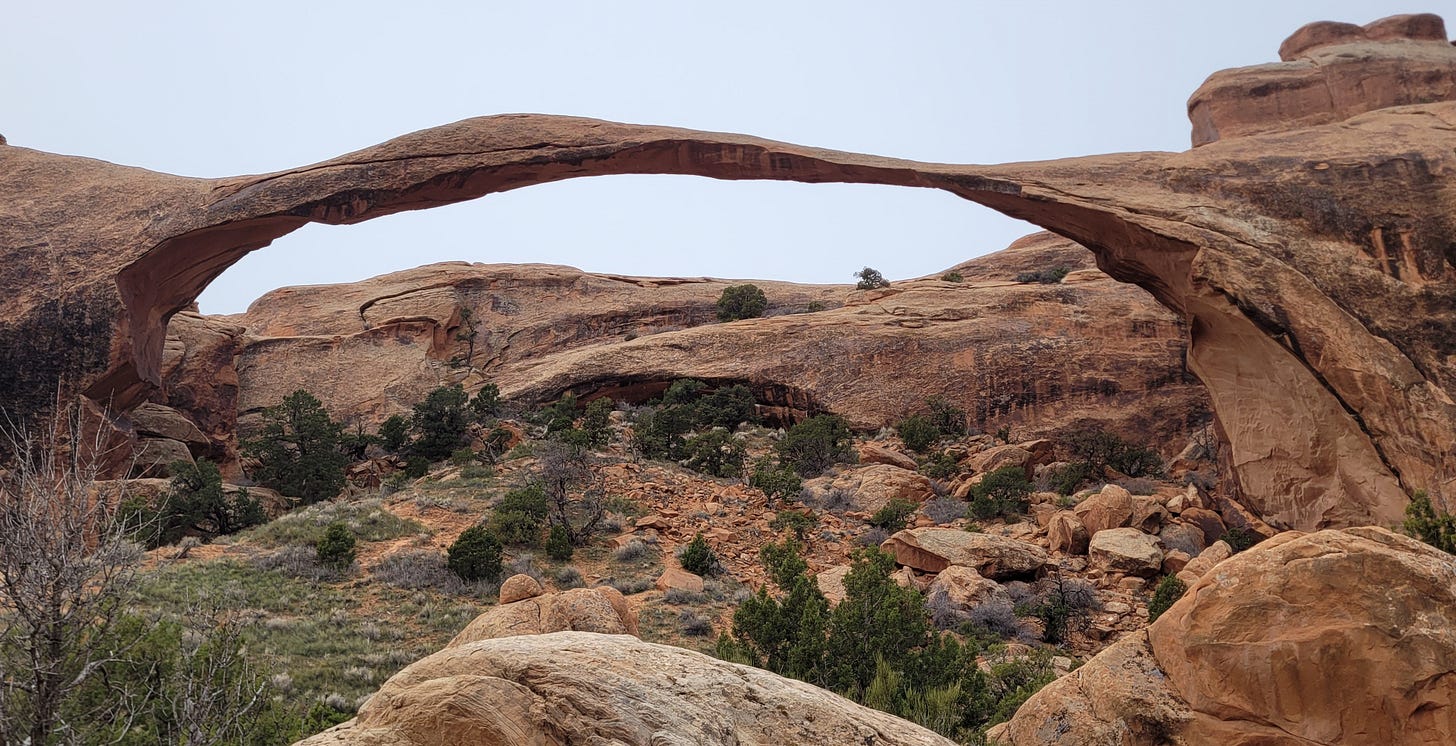

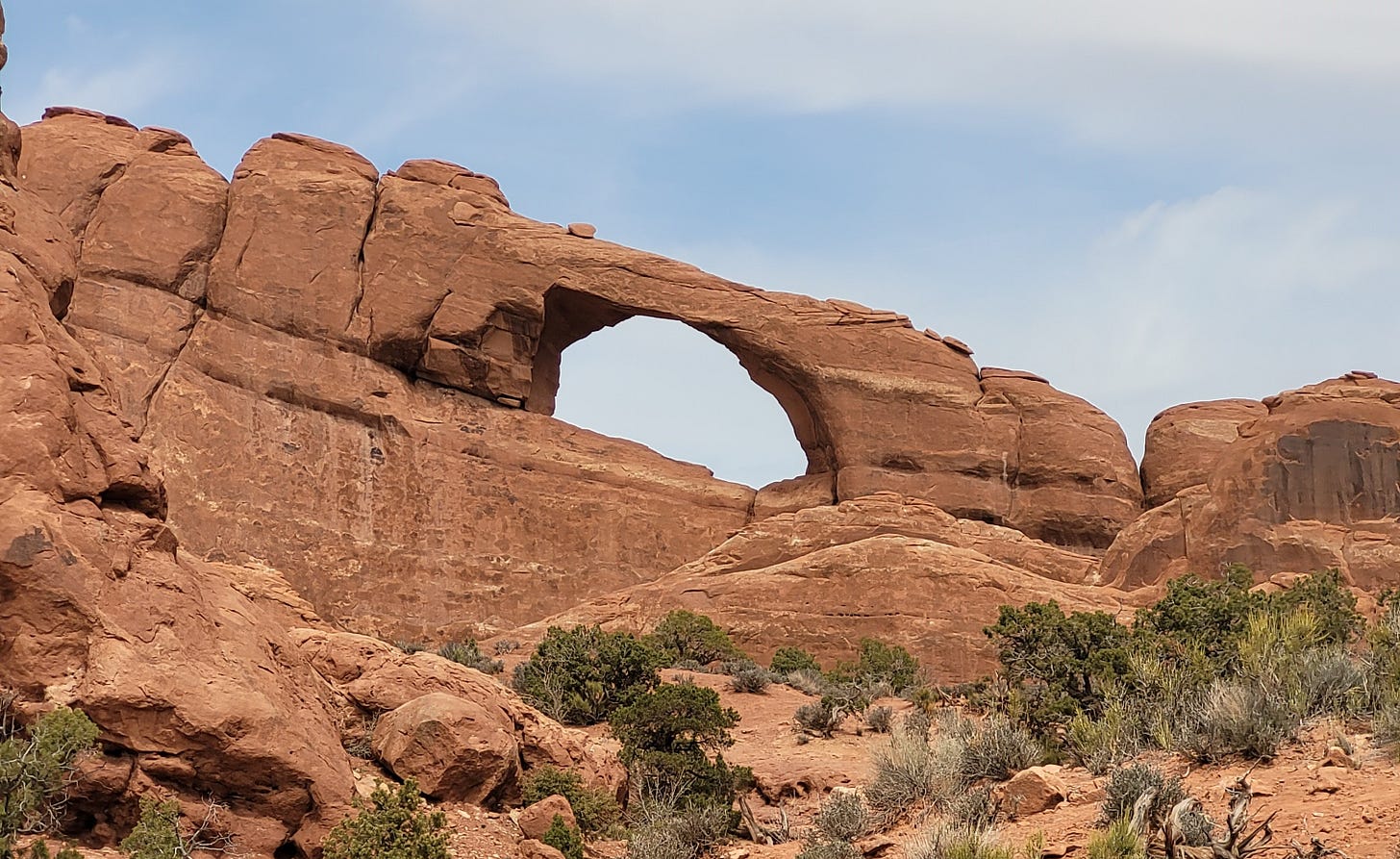



While touring I was blessed to have time to visit many of these fabulous places in the Southwest! Now I want to go back and just spend about month revisiting these places with your writings as our tour guide! Thank you! 🥰🥰🥰
Thank you for the link to the video, very cool. I especially love the before and after photo of your parents and yours in 2022. Article makes a person think and makes me not to spend too much time under the window arch! Lol